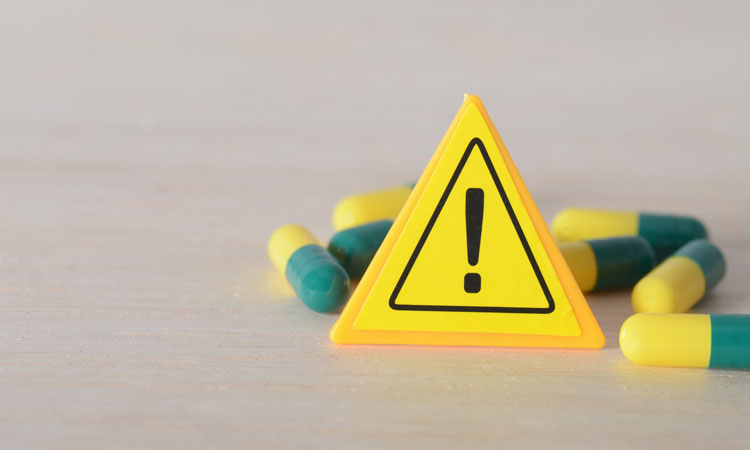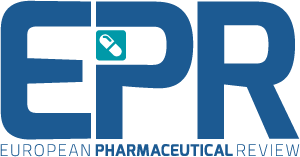Navigating the regulatory challenge of PFAS for pharmaceutical manufacturers
Posted: 10 April 2025 | Courtney Soulsby (BSI) | No comments yet
Courtney Soulsby, Sector Development Director, Healthcare at the British Standards Institute, reveals how the industry can prepare for PFAS regulations now to get ahead of the curve.


There is worldwide concern around the use of PFAS. In the EU, a joint PFAS Restriction Proposal under REACH was submitted, aiming for a full ban by 2028/2030. This poses a significant challenge for pharmaceutical manufacturers, not least because of the technical challenges related to operations, supply chain and the environment. This article explores the potential impact of the proposal and considers how manufacturers can ensure the safety and reliability of their products.
Annual health-related costs related to PFAS across Europe are estimated at up to €4.6 billion
Global concerns surrounding PFAS, or per- and polyfluoroalkyl substances, are due to their well-documented effects on human health and the environment. PFAS are one of several materials that could be reclassified as emerging contaminants that must be designed out of future products because of their harmful health impacts. PFAS are synthetic chemicals, known as ‘forever chemicals’ found in everyday products across the world, including pharmaceutical products.
These chemicals are everywhere and have been used in many ways over the decades, bringing a range of benefits – from water- and stain-resistant coatings and firefighting foams to nail polish and food packaging. However, the world is now learning they are also persistent pollutants that contaminate our soil, water and air. In Europe, this has resulted in the contamination of drinking water supplies in several countries. Human biomonitoring has also detected a range of PFAS in people’s blood. Annual health-related costs related to PFAS across Europe are estimated at up to €4.6 billion.
The PFAS regulatory challenge
As a result, in the EU, a joint PFAS Restriction Proposal under REACH was submitted in 2023, aiming for a full ban on all PFAS by 2028/2030. However, given that PFAS are ubiquitous in the environment – from stain-resistant carpets and non-stick pans, to packaging and electronics, to name a few – the task is not that simple. Their extensive use in pharmaceuticals such as fluoxetine (Prozac, Sarafem, Rapiflux etc) and atorvastatin (Lipitor, Atorvaliq etc) is leading to concern among some industrialists and manufacturers that rely on PFAS for their products.
The challenge is that there are limited feasible economic alternatives to PFAS on the market. In most cases, alternatives are still in development – and even when such an alternative becomes available, certification or regulatory approval could take several years.
Pharmaceutical manufacturers under pressure
The PFAS regulatory approach poses a significant challenge for pharmaceutical manufacturers, and many organisations must make significant adjustments to prepare for the extent of PFAS compliance that is upon them, not least because of the technical challenges related to the scale of PFAS in operations, supply chain and the environment. Adding to this complexity are the significant country-to-country regulatory variances for medicine manufacturers to navigate.
alternatives are still in development – and even when such an alternative becomes available, certification or regulatory approval could take several years
Supply chain issues related to PFAS have become some of the biggest areas of concern for pharmaceutical organisations. Identified risks include vendor compliance with PFAS policies and minimisation goals as well as locating vendors who can reliably provide alternatives to PFAS-containing products and raw process materials. Supplier and/or material substitution in the pharmaceutical market is particularly challenging, as the suppliers and product materials are included in their regulatory market authorisation license. In many cases, organisations are embarking on a real-time evaluation of supply chain impacts around the globe to manage their PFAS practices both internally and with key vendors.
In addition, given the pressure to minimise their operational footprint in relation to PFAS, facility decommissioning has become a priority in the sector. This may cover anything from waste management, decontamination and health and safety issues to project controls including scheduling, resource tracking and communications. Given the pharmaceutical industry’s strong connection to chemical usage, waste controls and disposal, these approaches are not new. Yet navigating these new regulatory requirements, while aligning existing activities related to waste management, including the planned disposition of assets, can be a challenge.
The business response
Those in the sector will benefit from becoming acquainted with the changes now in order to stay ahead of the requirements. Equally, there are steps they can take today, wherever they are on this journey.
It is important to consider what risk assessment activities the organisation is undertaking to identify manufacturing processes that include PFAS materials. Are considerations focused on replacement materials and their impact on market authorisation licenses? How will you ensure that vendors are complying with the requirements?
Planning ahead can help organisations avoid issues with compliance, while ensuring that the safety and sustainability of pharmaceutical products for patients remains a priority
The pharmaceutical industry has been engaged in controlling waste from its manufacturing sites to mitigate negative environmental and human health impact for many years. BSI set an industry standard and independent certification programme on antibiotic waste discharge from the manufacturing environment, to mitigate the threat of antimicrobial resistance both to public health and the environment. A similar collective effort may be required to understand how industry can tackle PFAS and other harmful emerging contaminants.
Crucially, planning ahead can help organisations avoid issues with compliance, while ensuring that the safety and sustainability of pharmaceutical products for patients remains a priority. Escalating global concerns over the environmental and health implications of PFAS are not going away. This does represent a challenge, but those in the sector have the opportunity now to plan ahead and get on the front foot.
Meet the author
Courtney Soulsby works as Global Director for the Healthcare and Life Sciences sector team for BSI (British Standards Institution), focusing on healthcare sustainability. Having worked with pharmaceutical and med tech industries and their supply chains for over ten years, Courtney has a deep understanding of the issues with regulation, environment, security, compliance, sustainability and other risk exposures when manufacturing and transporting medicines.
About BSI
BSI is a business improvement and standards company that, for over a century, has been recognised for its positive impact on organisations and society, building trust and enhancing lives. Today BSI partners with more than 77,500 clients in 195 countries and engages with a 15,000-strong global community of experts, industry and consumer groups, organisations and governments. Utilising its extensive expertise in key industry sectors – including automotive, aerospace, built environment, food and retail, and healthcare – BSI delivers on its purpose by helping its clients fulfil theirs. BSI affords organisations the confidence to grow by partnering with them to tackle society’s critical issues – from climate change to building trust in digital transformation and everything in between – to accelerate progress towards a better society and a sustainable world.
References
- CWSRF Emerging Contaminants – Frequent Questions and Answers | US EPA [Internet]. US EPA. 2024. Available from: https://www.epa.gov/cwsrf/cwsrf-emerging-contaminants-frequent-questions-and-answers
- New Study Finds Drinking Water Across Europe Widely Contaminated with Forever Chemical [Internet]. CHEM Trust. 2024. Available from: https://chemtrust.org/news/europe-drinking-water-contamination-forever-chemical/
- Emerging chemical risks in Europe — “PFAS” — European Environment Agency [Internet]. www.eea.europa.eu. Available from: https://www.eea.europa.eu/publications/emerging-chemical-risks-in-europe/emerging-chemical-risks-in-europe
- Goldenman G, Fernandes M, Holland M, et al. The cost of inaction. TemaNord. 2019.
- PFAS Restriction under REACH [Internet]. Eurovent. Available from: https://www.eurovent.eu/issues/pfas/









